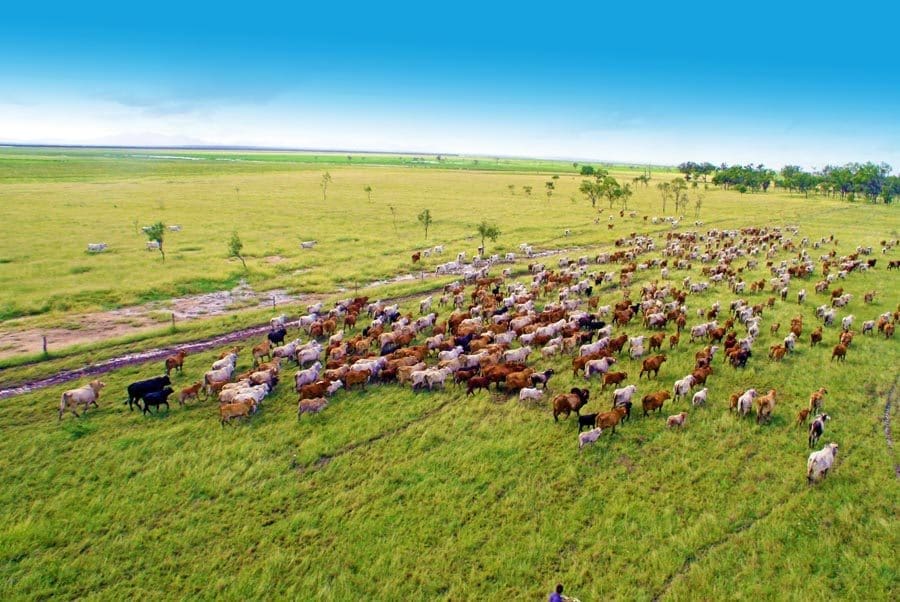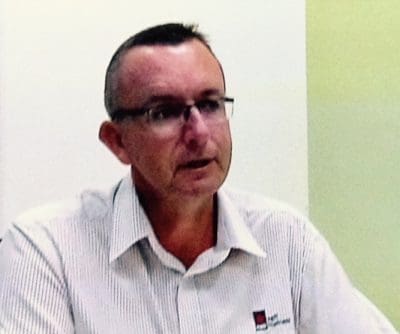
THERE is great news for expansion-minded graziers in good financial shape – a leading independent property valuation and advisory group suggests financial deals are readily available to purchase cattle assets to increase scale.
From a lending perspective, however the focus is on working with the right clients to take advantage of available opportunity.
The latest Month in Review by Herron Todd White claims the strong outlook in the cattle market is driving beef property sales – with both new and established money.
Tim Lane, National Director Rural, said the opportunity to access finance at current rates and potentially lock in costs is assisting this trend.
“A recent conversation with a corporate agri-banker suggests the finance market is very competitive and there are good deals being done,” he said.
Mr Lane said there was an opportunity to restructure current finances and get a better deal or access additional capital.
It’s pretty easy to get two or three financiers bidding for your debt business
“It’s pretty easy to get two or three financiers bidding for your debt business, if you look like the right shape.”
Because money is so cheap, all the banks have capital and want to get it out into the market, but Mr Lane warns that the banks are still looking for people to pay down debts over time.
“Pricing and terms are becoming more negotiable for the right clients. Lenders are looking for someone who demonstrates a year-in, year-out capacity to create a profit over and above their costs of operation and their living costs.”
“In other words, they have a good profitable business, a good equity position, both the balance sheet strength and the demonstrated management skills to run the operations, and can deal with the seasonal and commodity risks.”
Ben Barratt is responsible for ANZ’s Corporate Agribusiness portfolio for Queensland the Northern Territory, which focuses on primary producers and agribusinesses with funding requirements greater than $10 million.
He said he looks for a client who has the following outlook:
- A proven track record of profitability – a balance sheet in order to expand.
- Can service their existing facilities – if it’s straight finance.
- Has management in place with a clear succession plan so they know who’s going to be operating that asset into the future.
- Is innovative and has the productivity of their herd where they want it to be.
- Has a strong track-record and a strong direction of where they are headed in the future.

Jason Lipp
The National Australia Bank’s Regional Agribusiness Manager for the Darling Downs, Jason Lipp agrees.
“First and foremost, I look for debt serviceability or cash flow; secondly, management expertise and capability; and thirdly, a borrower’s underlying equity position. It’s very much a case-by-case situation,” he said.
However, the banks remain tight-lipped about the deals they are currently offering clients.
Mr Lipp said NAB was market-competitive when it came to interest rates, no matter what the Aussie dollar is doing.
“We are seeing strong interest in the cattle market industry – whether that be farm gate or feedlots. There is active interest in the market and it is as competitive as ever. At the moment there are good opportunities to consider fixed interest rates in the present market,” he suggested.
Mr Lipp said many grazier clients were looking to expand their businesses –buying additional breeding country, finishing blocks or feedlots. “There are multiple elements of the value chain considering expansion,” he said.
Mr Barratt said the deals depended on the individual circumstances of that particular cattle producer.
“While there has been increased corporate activity, larger family-owned cattle operations are stepping into the property market,” he said.
Some are looking to buy-out the neighbour. It makes sense from an efficiency point of view and sometimes they are prepared to pay more because of the potential reduced ongoing operating costs.”
Mr Barratt said other graziers were looking to buy cattle country in different areas to complement their existing business and to spread their geographical and climatic risk.
“They might already have breeder country and they’re looking for some fattening country or they already have fattening country but it’s too dear where they are now, so they are looking to go further afield and buy a breeder block.”
There are a number of triggers that have made the financial environment so competitive and Mr Barratt attributes it to a combination of interest rates, commodity prices, the eastern young cattle index and dramatic turnaround in seasonal conditions.
“Well-positioned graziers who have been waiting for better seasonal conditions are now prepared to buy property. There are others who have a herd intact but are relatively short on grass, who are looking to buy in order to give their existing country a spell or to grow their new herd into the new carrying capacity that a new property might represent for them.”
Next week: We continue this discussion with a look at some of the other available options in the lending market.

Economically speaking, the transaction ultimate still needs to make sense on a stand-alone basis; else you will have to cannibalise cash-flow from other assets to fund the growth: and that strategy has its own rewards …
Happy Investing!
Dear Mr. Graham Johns,
Most Agistment agreements are struck when you need feed, and the Agister has grass and water that you need; therefore in times of drought, the Agistee will pay a premium for this feed and water as competition and scarcity drives up the price: simple supply and demand, market forces at work. Or, you do not pay the Agistment asked, and sell the cattle instead!
I was looking at the question of value, by looking through the cycle (in the good times and the bad), and purposefully used a proxy of sheep Agistment (as the same amount of grass would be eaten), to resolve the argument that you pose.
I am discussing intrinsic value, looking through a 10-year cycle, to see where Spot Price sits relative to Intrinsic Value.
If Price to pay is higher than Value, then you are arguably a Speculator; hoping the Value will rise to meet what you have paid, and justifying your position: or hoping for a ‘bigger-fool’ to come along and pay you more as an exit strategy.
My family had around five properties in the Blackall and Aramac districts in Queensland, until 1988; all accumulated since around 1906: so I do understand the buy and hold strategy.
I was speaking from an Investors view-point; where the focus is not the family-farm, but transacting to crystallise paper profits into actual money; a land play, if you will!
And there is plenty of that activity going on in the market-place for pastoral grazing enterprises.
If a buyer is not an investor, and is happy to pay the asking price at whatever cost, then so be it; and live with the consequences of your decisions.
The market is always right: right?
This current state of play reminds me of the early 1970’s!
I repeat, Buyer Beware …
Michael j vail obviously understands finance but has forgotten that most family pastoral operations buy and never sell and will pay a premium for a neighbouring property to build economy of scale. Therefore the purchase price becomes irrelevant after over 100 or so years. I would also like to know where you can get cattle agistment for $2.10 a head per week, we started out agisting our heard years ago and have never paid under $3 even 15 years ago
In fact, after reflecting on it further, if I was invested in the pastoral grazing industry at the moment, at current prices for livestock and land, I would be seriously considering locking-in the capital asset growth accretion to date, and selling half my portfolio; so that the balance owes me nothing: and move back in later, when the market settles back to long term trend.
Of course, these decisions are different for everyone, and there will be estate planning and taxation issues to consider. So talk to your advisors about your circumstances first; and then make your decisions for the long term benefit of capital growth.
Investors ride the cycle, selling when markets get frothy, thereby locking-in capital gains; whereas empire builders buy and hold and let time and the generations following take care of growth.
Where do you sit? What is best for you and yours?
Have a think …
Why buy at the top of the market; as our prices are the highest beef prices in the World, right now: and it appears that no-one is looking through the long-term cycle once the commodity cycle goes into reverse, and heads back to long term trend.
Now should be a time to pause, reflect, consolidate, and wait and see …
It is all very well to borrow at these artificially contrived, low levels of interest rates; however, when the land values fall (and they will when prices correct) you may have borrowed on the higher capital ‘value’ (albeit, dollar-cost-averaging, for the more established players), and the value does not stay captured with the Investor; but rather shifts to the Vendor and the Bank.
Do not buy as an investment for tax purposes (as taxation is an outcome of a decision, and not a driver of value), nor for reasons outlined in a framing or signalling conversation with an Agent or Banker.
The only time to invest, unless you can see a growth opportunity that others cannot, is when there is actual value from the long-term productivity; and where Return on Invested Capital (ROIC) is greater than the weighted average cost of capital (WACC) by at least CPI plus around 2%pa (real).
So if WACC is arguably around 10% (+/- 2%), then the ROIC you should be budgeting on, is net profit after tax, with interest added-back (or use EBIAT), of around 14%pa.
Just saying, it is always better to protect your capital, than buy a yield story that like an Emu, may look like a bird, but does not fly …
My appropriate multiple of EBIAT is around no more than 6.25-times; and the Enterprise Value to Gross Revenue multiple would be between 1.7 to 1.8-times long-term Gross Revenue from Livestock Contracts.
(As a comparison, Bell Potter’s Head of Research, TS Lim, published a Briefing Note [Dec. ’15] that put Australian Agricultural Co’s comparable multiple at around 1.72-times Gross Revenue.)
You make your money when you buy; not when you sell: so do not ever pay more than Intrinsic Value as a going-concern (WIWO) Enterprise Value; and where the Enterprise Value is the total of all assets necessary to earn that level of income, including all things necessary.
That means the Land is included!
If you want the BARE, Improved Value of the Land only, use the Agistment Formula as a proxy for an operating lease; where the weekly Agistment Rate is multiplied by (365.25 / 7), and divided by the product of the sustainable stocking rate multiplied by the cost of debt.
A proxy for weekly Agistment Rate is the rate for a DSE Sheep of $0.30 per Head per Week. Roughly 7-Sheep to 1-Head of Cattle on an Adult Equivalent basis, so that makes a long term cattle Agistment Rate around $2.10.
If SSR is 1:20-Acres, and the cost of debt is around 8%pa, then ($2.10 x (365.25 / 7)) / (20 x 0.08) = DUA = $68.48 per Acre is the value of the bare but improved land; where any improvement or development is represented in the SSR.
Caveat Emptor …
Buyer beware …
If any financiers wish to lend money to purchase a livestock carrier that can trade Australia please email me.